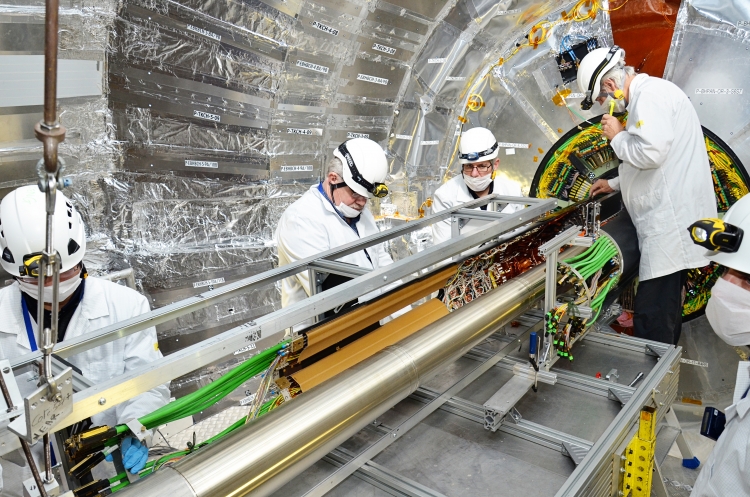
After the LHC was shut down at the end of 2018, one might think that physicists working in the large experiments can sit back and relax. On the contrary, CMS will undergo an intensive upgrade and maintenance program during the two-year long break in order to ensure excellent performance of the detector in the subsequent physics program.
The first step of this was the extraction of the pixel detector, the innermost sub-detector, right in the heart of CMS. A team of experts from all over the world came to LHC Point 5 in early January in order to carry out the work. “It was an amazing experience to be part of such an international effort. We successfully finished this highly complex intervention last week”, said Klaas Padeken, one of the pixel experts.
The detector has been moved to a clean room on the surface, at Point 5, where it will be stored for the next two years. “Apart from solving a few problems we have identified during the 2018 data-taking, it will be very important to keep the detector parts dry and cold in the coming years”, Jory Sonneveld explained. The reason is that the silicon sensor properties will degrade if the silicon stays at room temperature for any extended period of time. Large cold boxes have been built that can cool the 5m long detector down to 0°C. The boxes are flushed with dry air with a volume flow of more than 18 000 liters per hour. This keeps the relative humidity in the boxes below 1%, and ensures that there is no water condensation or, worse, ice formation inside the very sensitive detector components.
In the next months, experts will work hard to consolidate the detector for future operations, permanently removing vulnerabilities that were uncovered during data taking in 2017 and 2018. In addition, the first and innermost of the four detection layers of the barrel pixel detector will be replaced with a newly built layer in order to prepare the detector for excellent data delivery once the LHC resumes operation in 2021.
- Log in to post comments

